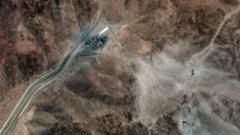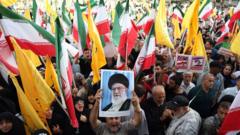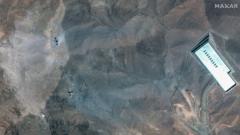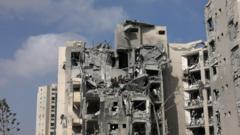The recent leak from the Defense Intelligence Agency (DIA) suggests the damage inflicted by US strikes on Iran's nuclear facilities, particularly Fordo, may be less significant than initially suspected. Although Iran's nuclear ambitions have been temporarily hindered, the core components of its program remain intact, complicating future assessments and responses.
Assessing the Fallout: Insights from the Leaked US Report on Iran's Nuclear Capabilities

Assessing the Fallout: Insights from the Leaked US Report on Iran's Nuclear Capabilities
A leaked US intelligence report raises questions about the effectiveness of recent strikes on Iran’s nuclear sites and the future of its enrichment program.
The site of Fordo remains under close scrutiny as one of the most monitored locations globally. A leaked Defence Intelligence Agency (DIA) report indicates that US strikes against Iran’s nuclear installations might not have had the catastrophic impact anticipated, with officials suggesting that the operations only delayed Iran's nuclear ambitions by months rather than years. This assessment, however, is categorized as "low confidence," due to the complexities involved in evaluating damage at a site intentionally designed to evade detection.
The DIA, the Pentagon’s military intelligence organization, gathers extensive technical intelligence distinct from other agencies like the CIA. As Chairman of the Joint Chiefs General Dan Caine remarked shortly after the strikes, understanding the extent of the battle damage will be a protracted process. Assessing the real impact of the strikes is made difficult; satellite imagery fails to provide comprehensive insights into underground developments, hinting at a degree of resilience due to robust infrastructure that may have prevented complete destruction.
Despite the use of advanced bombs, it seems that while the facilities received damage, the main operations may have been shielded from significant destruction. The centrifuge systems critical for uranium enrichment could have suffered from the shock of the explosions, suggesting a disruption in operations, but not total annihilation. Enhanced intelligence strategies involving seismic analysis, radiation detection, and advanced mapping technologies like LIDAR will be pivotal in accurately gauging the repercussions of the military actions.
Moreover, any potential damage to sites like Fordo does not necessarily spell the end for Iran's nuclear ambitions. Intelligence indicates that the nation may have relocated some of its highly enriched uranium to alternative sites, including another mountainous location identified as "pickaxe." This strategic maneuver raises concerns about the continuity of Iran’s nuclear program, implying that even with setbacks, their capabilities could be reinvigorated rapidly.
The complexity increases as the timeline for weaponization and the development of effective delivery systems necessitate sophisticated scientific expertise. Previous actions, including targeted attacks on key Iranian scientists, aimed to stall progress and extend the timeline for nuclear weapons development.
The impact of the recent strikes appears to have delayed progress, though quantifying the extent of that delay is fraught with uncertainty. As intelligence agencies delve deeper into analyzing the situation, any signals that Tehran is hastily re-establishing its nuclear program could escalate tensions in the region. As this dynamic evolves, the international community watches closely for indicators of Iran's nuclear trajectory amidst a precarious geopolitical landscape.























